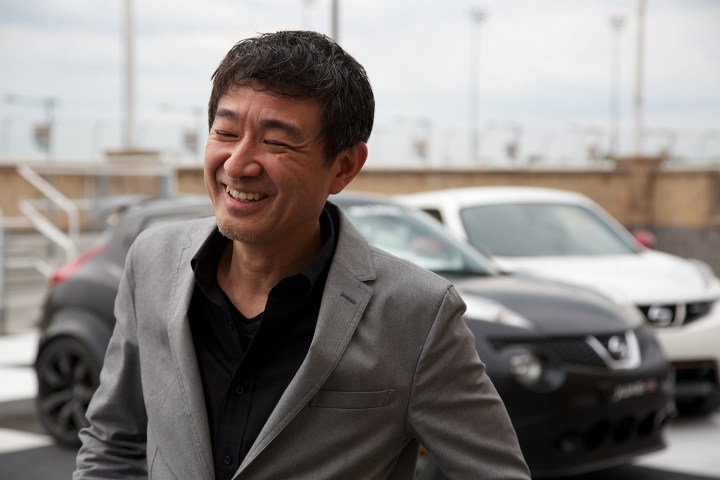
He may look like just another slickly-dressed automotive executive, but Hiroshi Tamura is a monster tamer. He’s in charge of the Nissan GT-R, the iconic performance car known to fans as “Godzilla.” As GT-R chief product specialist, Tamura-san is charged with ensuring that Godzilla stays in fire-breathing form.
The GT-R is as crucial as to Nissan as its other sports car, the 370Z. Both nameplates celebrate their 50th anniversaries this year. Nissan turned the 2019 New York Auto Show into a nostalgic celebration, complete with special editions and displays of vintage cars. It was an opportunity to salute automotive history, but it also highlighted the age of the current-generation GT-R and 370Z.
Both Nissan sports cars debuted over a decade ago, making them very old by industry standards. They remain competent performers, but the competition is always evolving, and the entire sports cars genre could eventually be disrupted by the endlessly discussed proliferation of electric powertrains and autonomous driving. But that doesn’t worry Tamura-san. He plans to face the future with the patience of someone who works with monsters.
What makes a GT-R a GT-R? What sets it apart from other performance cars?
Good question. I’m not arrogant, but I don’t compare it to any other vehicle. GT-R has its own standalone philosophy and direction. Our competitor is our previous GT-R. We always chase after our own goal, the pursuit of driving pleasure, meaning we compete with the old model.
The car has changed significantly
We didn’t change the approach of total balance management. “Balance” is a sometimes-boring keyword, but it’s very important for the power, brake system, aerodynamics [to be balanced]. This combination is important for a sports car.

So it’s about keeping everything on the same level and not letting one aspect of the car overpower everything else?
Right.
Over the years Nissan has used motor sport in the development of cars. Is that still an important aspect of development?
Why not? Because to hit the border, hit the limitation, is one of the breakthrough turning points. Because we are struggling to break through, this is a big learning point or stage for us. With all sports cars, people are struggling to break through. But this is beyond the border, one of the big pressure, or big tension, standpoints.

The current-generation GT-R has been around for quite awhile. Why do you feel that it’s been okay to keep it in production this long without a redesign? Do you feel the current GT-R is still good enough?
It’s always not good enough, but how can I say… In, 1989 we launched the car, R32 Skyline GT-R. Then the R33 Skyline GT-R, which started in 1995. Then we have the 1999 R34 Skyline GT-R. But they all used the same RB26 engine, twin-turbo, and all-wheel drive system. From 1989 to the end of 2002 – 13 years – we didn’t change anything about this platform except the wheelbase length. From 2007 [when the current-generation R35 GT-R launched overseas] to now is 13 years. So it’s not so long.
In a sports car some matureness is very important. Customers want this kind of sports car attitude. Of course, from a journalist’s standpoint, you say “[it must be] brand new.” This is a paradox, you know.
Do you think buyers are still happy with Nissan’s sports cars?
We have to keep it at a certain price zone. It’s a paradox because when we [make] a huge investment, sometimes the car’s price goes up. But if we are able to keep an appropriate investment, we are able to keep the same price zone.
I need to be careful because “customer” needs to mean “buyer customer.” That’s a big headache point. For example, [370]Z, we must keep entry prices under $40,000. We can’t jump into the $50,000 to $60,000 range.

So the capital required to redesign the 370Z would bump the price up too far?
Yes. But if the customer really wants to have some breakthrough, I have to think about it for the next generation of car.
One of the arguments for more frequent car redesigns is, as you mentioned, the incorporation of new features. Have you seen anything new that’s getting you excited for future generations of sports cars?
That’s a good question, but a tricky question. It all depends on the customer’s voice. If a customer wants an EV, I say “why not?” But don’t write that Tamura-san said, “The next generation of sports cars will be EVs.” I didn’t say that, but why not study all of the solutions for customers? So if customers really want to have an EV, I will do that. If customers want an internal-combustion engine, I have to do that. I have to think about the customer’s voice, real customers. Meaning buyers. That’s it.
Do you think there is potential to develop electric performance cars?
Why not? Because of Nissan Intelligent Mobility [the automaker’s umbrella term for tech development programs], we could [do] that. We are leaders in EVs. But is that really good for the customer? This is the primary consideration.

Another pillar of Nissan Intelligent Mobility is autonomous driving. What do you think the future of sports cars will be when cars can drive themselves?
Again, why not? Autonomous, where you have a coffee and read a newspaper in the car, why not? You have at the Long Beach Grand Prix, this super-heavy traffic before track day. Why not autonomous? Take me to the circuit. After that, you can grab the steering wheel and do a track day.
The GT-R is already approaching an autonomous standpoint, but just a Level 0.5 or Level 0.1, because of the ABS [anti-lock brakes], because of the traction control, because of the all-wheel drive system. These are protections; your skills may be good, but sometimes you need help. And they involve some automation of the car at a fundamental level.


